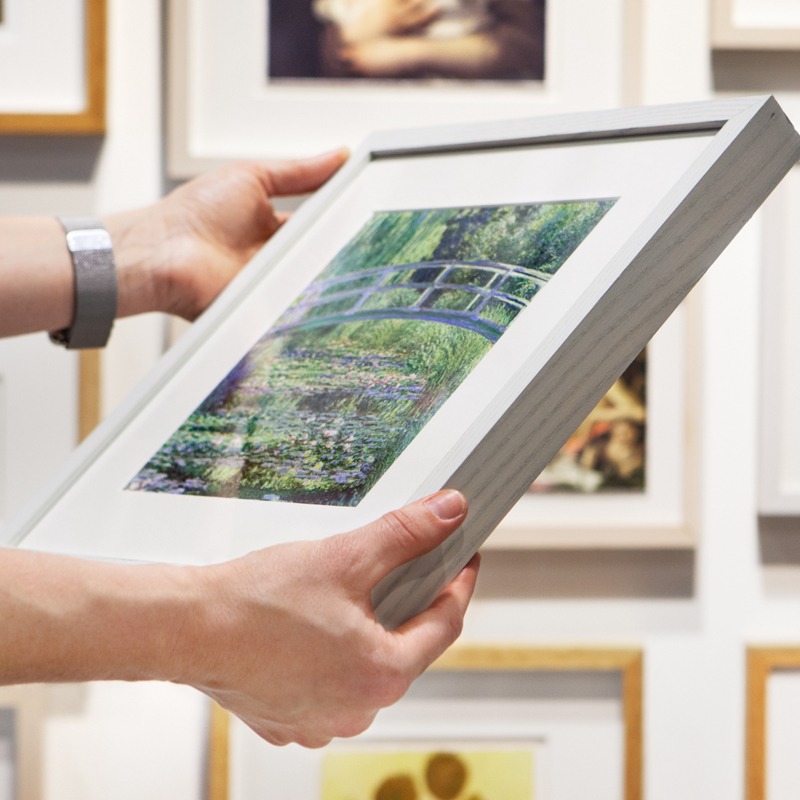Claude Monet, 'Water-Lilies, Setting Sun', about 1907
About the work
Overview
During the final two decades of his life Monet devoted himself to painting the water garden he had created at his home in Giverny, producing around 250 innovative canvases. His paintings became increasingly experimental as he gradually abandoned depictions of the banks of the pond, its Japanese bridge and the traditional horizon line in order to concentrate on the subtle modulations of light as it transformed the water and the reflections of foliage and clouds.
In this painting the only hint to help situate the viewer is the clump of plants in the bottom left corner which indicates the approximate position of the bank. The pink and yellow rays of the setting sun shimmer on the pond. Our vision seems to oscillate between the surface of the water and the depths of the pond; between the horizontal lily pads and the dark vertical reflections of the weeping willows.
Key facts
Details
- Full title
- Water-Lilies, Setting Sun
- Artist
- Claude Monet
- Artist dates
- 1840 - 1926
- Date made
- about 1907
- Medium and support
- oil on canvas
- Dimensions
- 73 × 92.7 cm
- Inscription summary
- Signed
- Acquisition credit
- Bequeathed by Simon Sainsbury, 2006
- Inventory number
- NG6608
- Location
- Not on display
- Collection
- Main Collection
- Frame
- 19th-century French Frame
Provenance
Additional information
This painting is included in a list of works with incomplete provenance from 1933–1945; for more information see Whereabouts of paintings 1933–1945.
Text extracted from the National Gallery’s Annual Report, ‘The National Gallery: Review of the Year, April 2007 – March 2008’.
Exhibition history
-
2008The Simon Sainsbury Bequest to The National GalleryThe National Gallery (London)22 October 2008 - 1 February 2009
-
2013Normandie ImpressionnisteMusée des Beaux-Arts (Rouen)27 April 2013 - 29 September 2013
-
2014Monet: The Water Garden at GivernyThe National Gallery (London)16 September 2014 - 31 December 2015
-
2018The Enchanted GardenLaing Art Gallery23 June 2018 - 7 October 2018William Morris Gallery19 October 2018 - 17 January 2019
Bibliography
-
2008National Gallery, The National Gallery: Review of the Year, April 2007 - March 2008, London 2008
About this record
If you know more about this painting or have spotted an error, please contact us. Please note that exhibition histories are listed from 2009 onwards. Bibliographies may not be complete; more comprehensive information is available in the National Gallery Library.

















